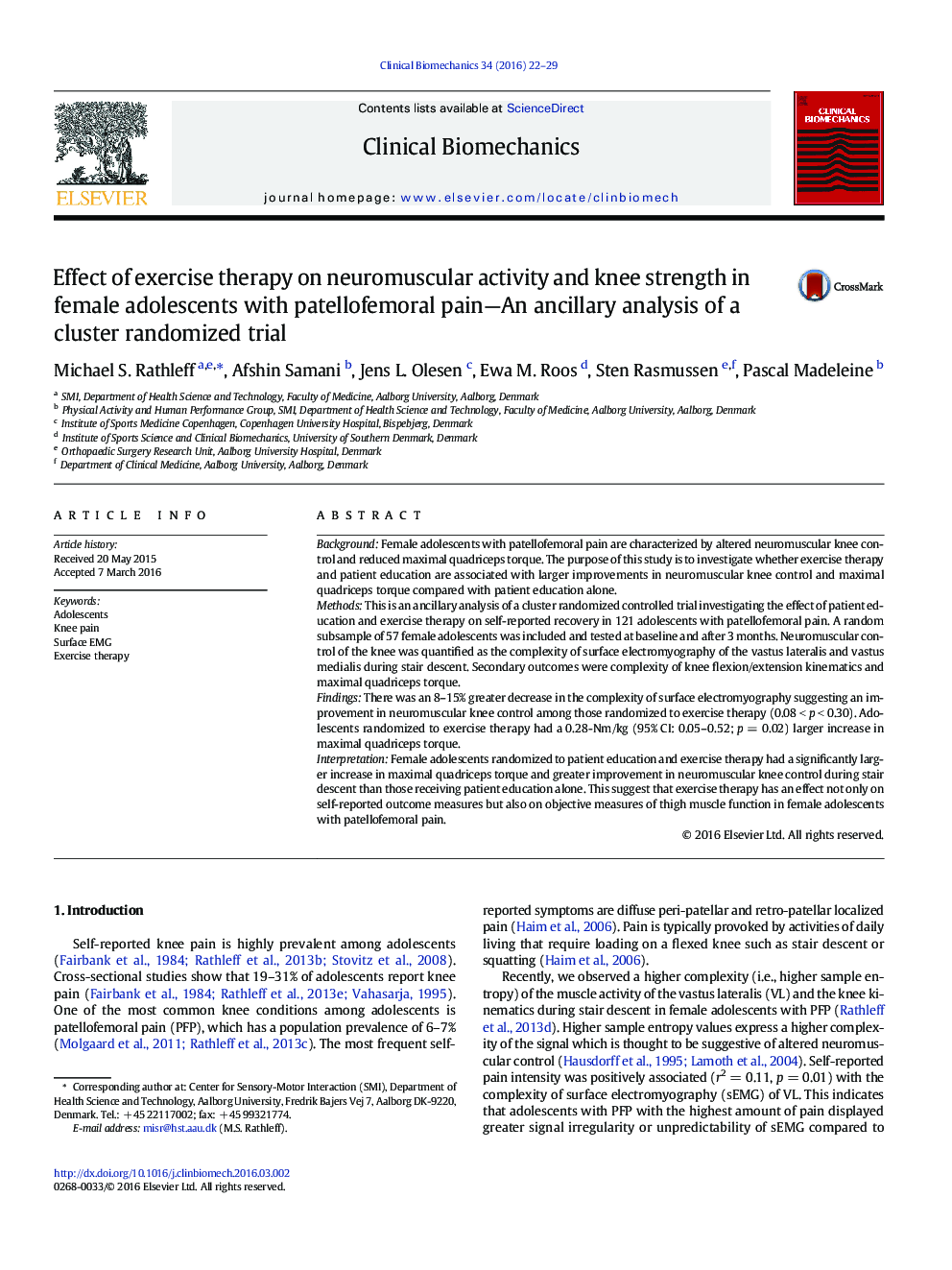| کد مقاله | کد نشریه | سال انتشار | مقاله انگلیسی | نسخه تمام متن |
|---|---|---|---|---|
| 4050151 | 1603744 | 2016 | 8 صفحه PDF | دانلود رایگان |
• Patellofemoral pain is highly prevalent among adolescents.
• They have altered neuromuscular knee control and low quadriceps strength.
• We examine the effect of exercise therapy on knee control and quadriceps strength.
• Exercise therapy increase knee control and quadriceps strength more than patient education.
BackgroundFemale adolescents with patellofemoral pain are characterized by altered neuromuscular knee control and reduced maximal quadriceps torque. The purpose of this study is to investigate whether exercise therapy and patient education are associated with larger improvements in neuromuscular knee control and maximal quadriceps torque compared with patient education alone.MethodsThis is an ancillary analysis of a cluster randomized controlled trial investigating the effect of patient education and exercise therapy on self-reported recovery in 121 adolescents with patellofemoral pain. A random subsample of 57 female adolescents was included and tested at baseline and after 3 months. Neuromuscular control of the knee was quantified as the complexity of surface electromyography of the vastus lateralis and vastus medialis during stair descent. Secondary outcomes were complexity of knee flexion/extension kinematics and maximal quadriceps torque.FindingsThere was an 8–15% greater decrease in the complexity of surface electromyography suggesting an improvement in neuromuscular knee control among those randomized to exercise therapy (0.08 < p < 0.30). Adolescents randomized to exercise therapy had a 0.28-Nm/kg (95% CI: 0.05–0.52; p = 0.02) larger increase in maximal quadriceps torque.InterpretationFemale adolescents randomized to patient education and exercise therapy had a significantly larger increase in maximal quadriceps torque and greater improvement in neuromuscular knee control during stair descent than those receiving patient education alone. This suggest that exercise therapy has an effect not only on self-reported outcome measures but also on objective measures of thigh muscle function in female adolescents with patellofemoral pain.
Journal: Clinical Biomechanics - Volume 34, May 2016, Pages 22–29
